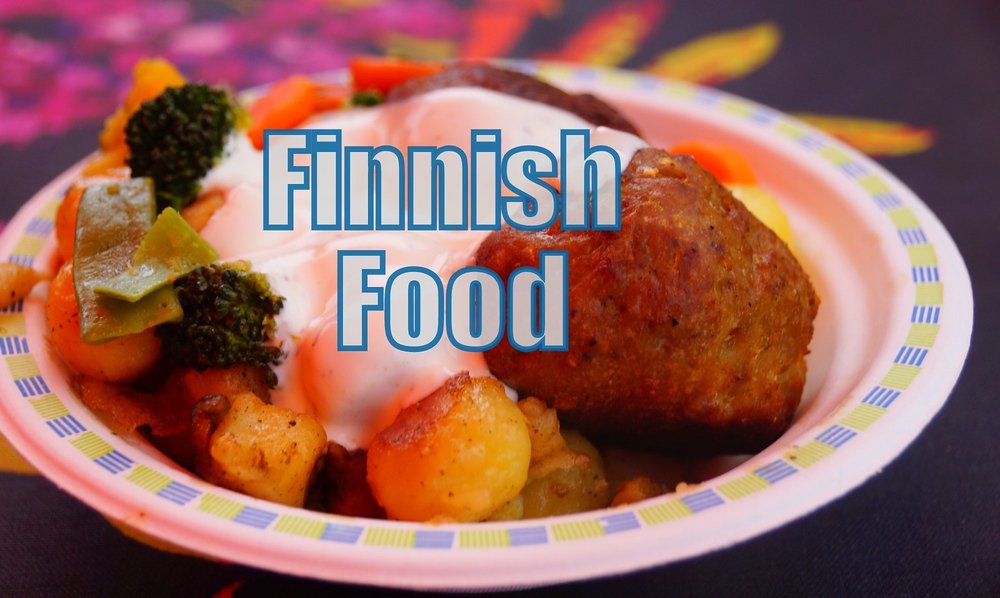Gyro, kebab, and donair are beloved culinary delights that have gained popularity worldwide. These savory dishes have captured the hearts and taste buds of food enthusiasts with their unique flavors, tantalizing aromas, and cultural significance. Whether enjoyed as street food, quick bites, or sit-down meals, gyro, kebab, and donair have become go-to choices for those seeking a satisfying and flavorful experience. These dishes have transcended their regional origins to become international favorites, sought after by both locals and global travelers.
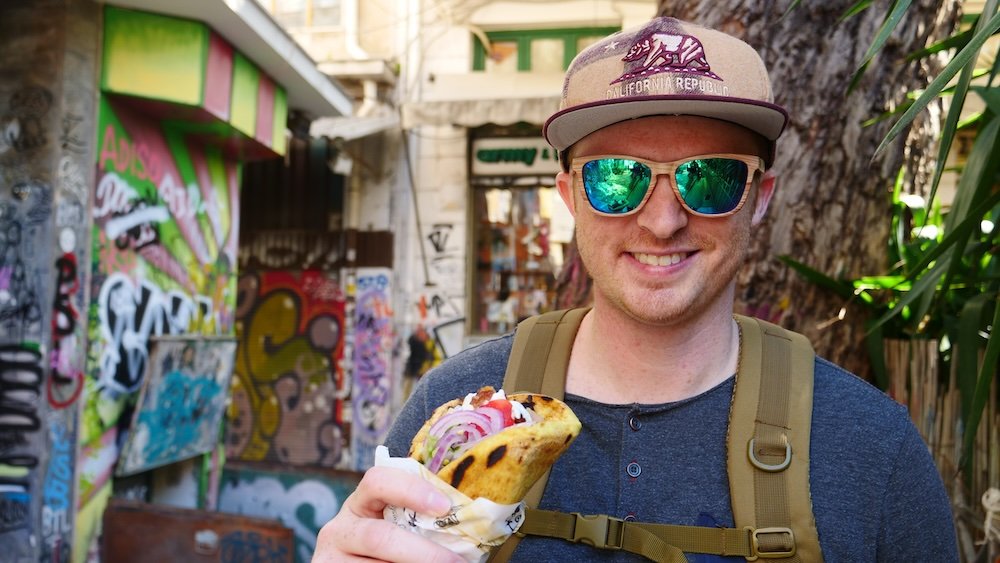
Unique Characteristics and Cultural Origins of Each
We’ll explore the captivating world of gyro, kebab, and donair. Gyro, originating from Greece, offers a mouthwatering combination of tender meat, aromatic herbs, and a creamy tzatziki sauce, enveloped in warm pita bread. Kebab, with its diverse variations across various cultures, tantalizes with skewered meats, vibrant spices, and enticing marinades, often cooked over an open flame. Donair, hailing from the Canadian Maritimes, showcases a fusion of flavors, featuring spiced and slow-roasted meat, a sweet garlic sauce, and a medley of fresh toppings, all embraced by a soft pita wrap.
These dishes not only showcase their unique characteristics but also bear the cultural heritage and traditions of the regions from which they originate. Get ready to delve into the intricacies of their preparation methods and savor the distinctive flavors that have captivated taste buds for generations.

Gyro: Origin and cultural significance of gyro
Gyro, originating in Greece, holds a special place in Greek culinary traditions and has become a beloved symbol of Greek cuisine. Its name, derived from the Greek word “gyro,” meaning “to turn,” refers to the meat’s rotation on a vertical spit. This cooking method has been passed down through generations, with each region in Greece having its unique spin on this classic dish.
Gyro is deeply rooted in Greek culture and is closely associated with celebratory occasions and street food culture. It is often enjoyed during festivals, family gatherings, and as a quick and satisfying meal on the go. Gyro’s popularity has transcended Greece’s borders and is now savored by people worldwide.
source: Samuel and Audrey on YouTube
Gyro’s Main Ingredients and Preparation
The key ingredients of gyro include thinly sliced, marinated meat, traditionally made from pork, though variations using chicken, lamb, or a combination of meats are also common. The meat is typically seasoned with a flavorful blend of herbs and spices such as oregano, garlic, paprika, and cumin.
To prepare gyro, the marinated meat is carefully stacked on a vertical rotisserie, forming a cone shape. As the meat slowly rotates, the outer layer becomes crispy and caramelized, while the inside remains juicy and tender. The result is succulent slices of meat, shaved off from the rotating spit as needed.
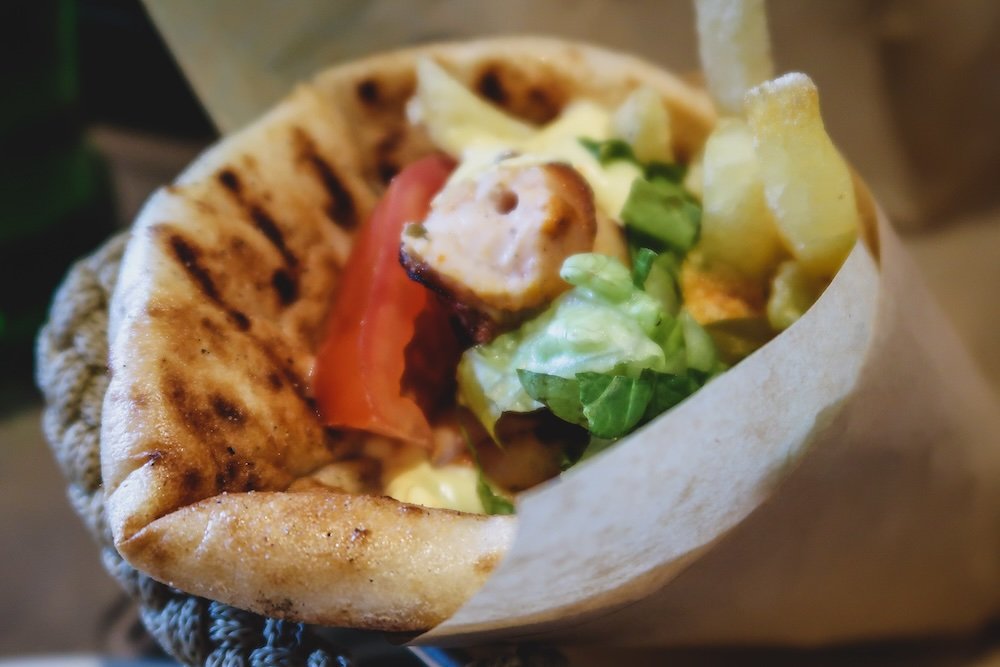
Gyro’s Regional Variations and Popular Accompaniments
While gyro is most commonly associated with Greece, there are regional variations that add their own unique twists to this delectable dish. In Athens, the traditional gyro is typically made with pork and served with tzatziki sauce, tomatoes, onions, and sometimes fries, all wrapped in warm pita bread. In other regions, such as Thessaloniki, a different blend of spices may be used, and the gyro might be topped with ketchup or mustard.
Popular accompaniments for gyro include tzatziki, a creamy yogurt and cucumber sauce that provides a refreshing contrast to the flavorful meat. Other common toppings include sliced tomatoes, onions, and crisp lettuce. Additionally, a sprinkle of tangy feta cheese or a drizzle of extra virgin olive oil can further enhance the taste.
These regional variations and choice of accompaniments highlight the versatility and adaptability of gyro, making it a culinary delight that can be customized to suit individual preferences. Whether enjoyed as a handheld street food or savored as a complete meal, gyro offers a satisfying and flavorsome experience that showcases the rich culinary heritage of Greece.
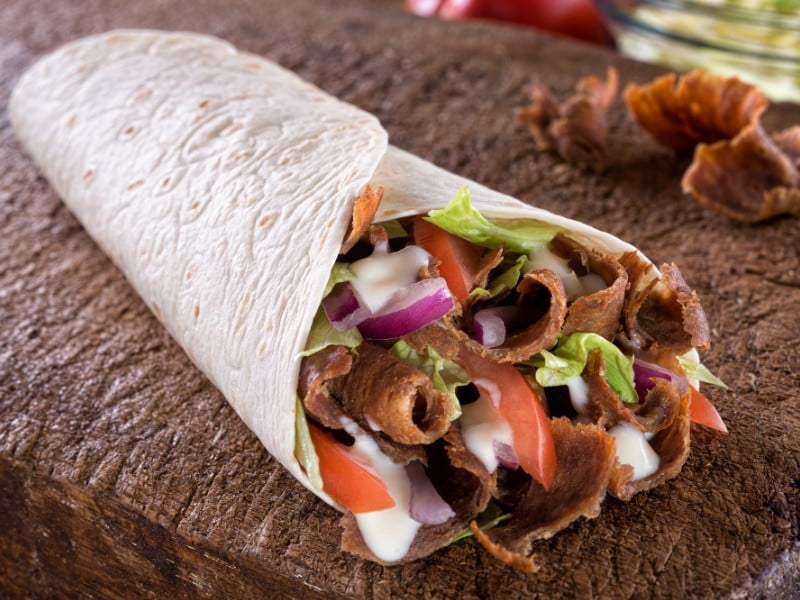
Kebab: Origins and diverse variations of kebab across different cultures
Kebab, a culinary delight enjoyed across various cultures, boasts a rich history that spans regions from the Middle East to South Asia and beyond. Its origins can be traced back to ancient times when meat was skewered and cooked over open flames. Over centuries, different cultures have embraced kebab, adapting it to their unique culinary traditions and creating a fascinating array of variations.
In the Middle East, kebab holds immense cultural significance and is a staple in the cuisine of countries such as Iran, Turkey, and Lebanon. South Asia has its own vibrant kebab culture, with India, Pakistan, and Afghanistan showcasing their distinct interpretations. Each variation of kebab showcases the creativity, flavors, and techniques unique to its respective culture.
source: Samuel and Audrey on YouTube
Kebab’s Primary Ingredients and Cooking Methods
The primary ingredient of kebab is typically meat, although vegetarian versions using vegetables or paneer (a type of Indian cheese) are also popular. Common meats used include lamb, beef, chicken, or a combination of these. The meat is often marinated in a flavorful blend of spices, herbs, and sometimes yogurt, imparting a distinct taste and tenderness.
Kebab cooking methods can vary, with grilling over open flames, skewering and roasting, or even shallow frying being common techniques. Skewered kebabs are often cooked over charcoal or a grill, allowing the meat to develop a smoky flavor and a delightful charred exterior while retaining its juiciness.
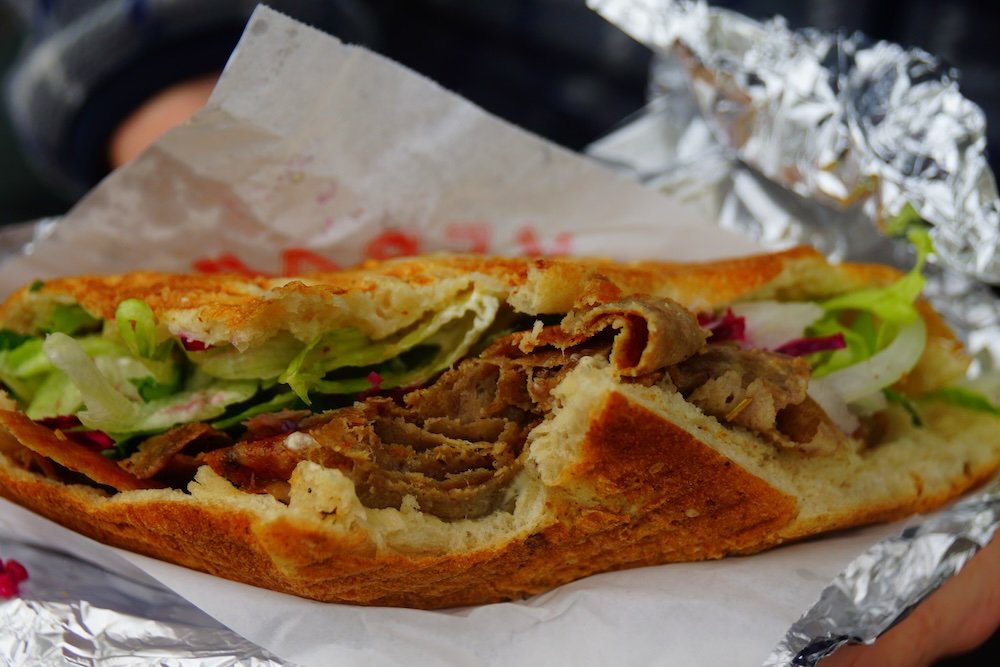
Regional Kebab Specialties and Traditional Serving Styles
Regional specialties offer a glimpse into the diverse world of kebab. In Iran, the famous chelo kebab features skewered, marinated meat served alongside saffron-infused rice, grilled tomatoes, and sumac-spiced onions. Turkish cuisine presents a mouthwatering variety, including shish kebab with marinated lamb or beef, and doner kebab, where thinly sliced meat is stacked on a vertical rotisserie and served in a flatbread wrap.
In South Asia, seekh kebab showcases finely minced meat mixed with aromatic spices, shaped onto skewers, and grilled to perfection. The delectable boti kebab of Pakistan features marinated chunks of meat, typically beef or chicken, cooked on skewers and served with naan bread, mint chutney, and pickled onions.
Traditional serving styles for kebab vary across cultures. Some are enjoyed as standalone dishes with a side of rice or bread, while others are served in wraps or accompanied by various sauces, chutneys, and salads. The presentation of kebab is often as diverse as its flavors, adding to the appeal and enjoyment of this culinary delight.
Through its variations and regional specialties, kebab offers a captivating journey into the world of grilled meat, spices, and cultural traditions. It serves as a testament to the creativity and versatility of culinary traditions, showcasing the rich tapestry of flavors and techniques found across different cultures.
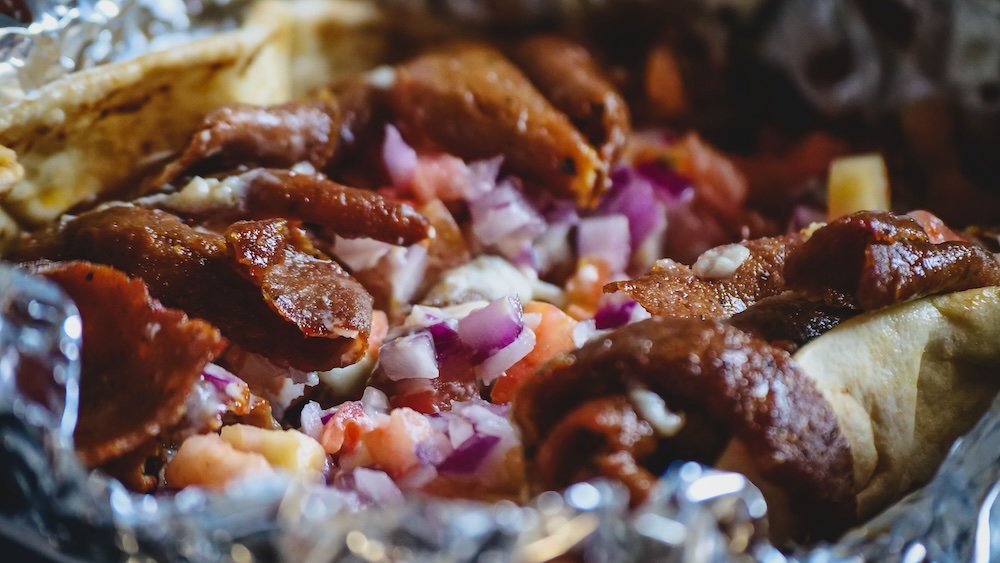
Donair: Introduction to the donair’s history and cultural roots
The donair, originating from the Canadian Maritimes, holds a special place in the hearts and taste buds of locals, making it an integral part of the regional culinary landscape. The donair’s history can be traced back to the early 1970s when it was introduced by Greek immigrant Peter Gamoulakos in Halifax, Nova Scotia. Inspired by the Greek gyro, the donair was adapted to suit local tastes, eventually becoming an iconic and beloved dish in the region.
source: Samuel and Audrey on YouTube
Ingredients and Preparation Techniques Specific to Donair

Donair is crafted using a unique combination of ingredients that come together to create its distinct flavor profile. The traditional donair consists of spiced and slow-roasted meat, typically made from a blend of ground beef, spices, and breadcrumbs. The meat is carefully seasoned with a flavorful mix of garlic, onion powder, paprika, and other secret spices that vary from one establishment to another.
Once seasoned, the meat is stacked onto a vertical rotisserie and slowly cooked until tender and juicy. As it roasts, the fat from the meat drips down, infusing it with flavor. The meat is then thinly sliced and served in a warm pita bread.
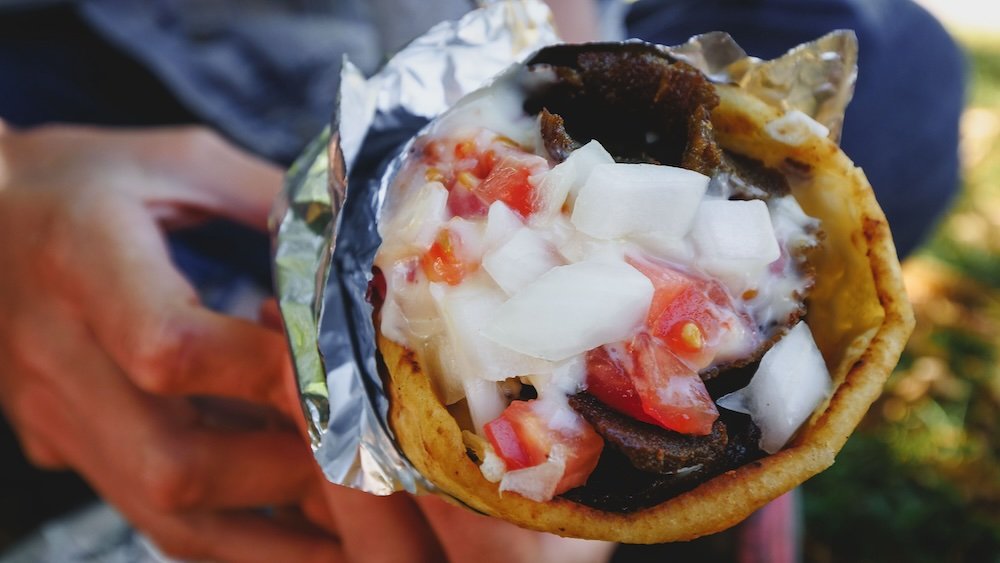
Popular Donair Variations and Notable Local Adaptations
While the traditional donair remains a beloved classic, there have been notable adaptations and variations that have emerged over the years. In some regions, chicken has been substituted for beef to create a chicken donair, offering a lighter and equally delicious option. Others have experimented with different spice blends or introduced innovative twists, such as adding vegetables or using different sauces.
In Halifax, the birthplace of the donair, a unique variation known as the “Halifax-style donair” has gained fame. This version features a distinctive sweet garlic sauce made from evaporated milk, sugar, garlic powder, and vinegar, which is drizzled generously over the sliced meat. The donair is then topped with diced onions and fresh tomatoes. This flavor combination, along with the signature sauce, sets the Halifax-style donair apart and has become an iconic local favorite.
Beyond Halifax, the donair has also made its way to other parts of Canada, such as Alberta, where it has been embraced and adapted to suit local tastes. These adaptations reflect the dynamic nature of culinary traditions as they evolve and are influenced by the communities that embrace them.
The donair’s popularity and regional adaptations highlight its enduring appeal as a satisfying and flavorful meal. It has become a cultural icon in the Canadian Maritimes, bringing communities together and representing a unique blend of Greek and Canadian culinary heritage.
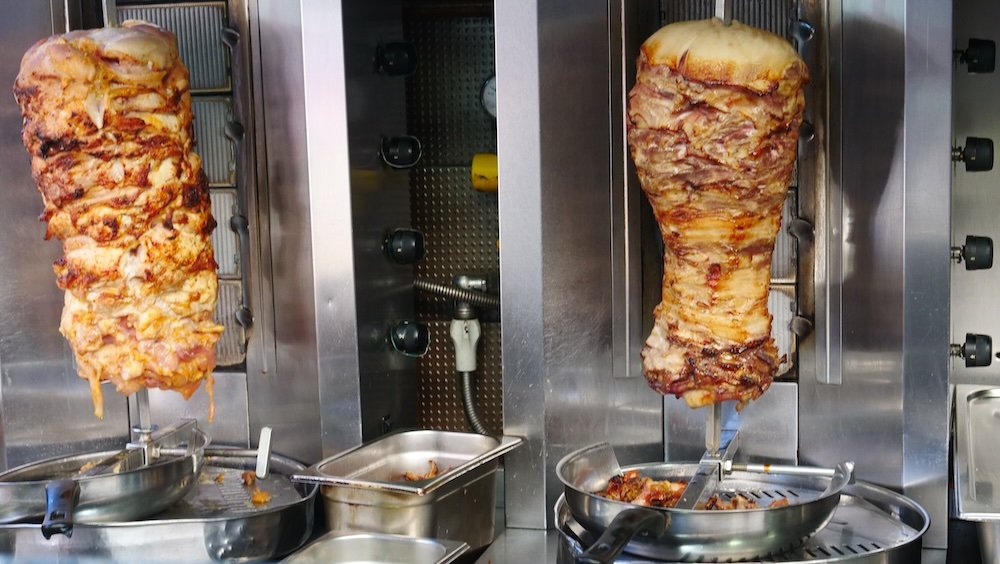
Key Differences and Distinctions: Gyro + Kebab + Donair
When comparing gyro, kebab, and donair, we find that each dish has its own set of main ingredients and distinct cooking methods.
Comparative Analysis of the Main Ingredients and Cooking Methods
Gyro typically features thinly sliced, marinated meat, often pork or chicken, cooked on a vertical rotisserie. Kebab, on the other hand, involves skewering chunks of marinated meat, such as lamb, beef, or chicken, and grilling them over an open flame or charcoal. Donair consists of spiced and slow-roasted meat, usually made from ground beef, cooked on a vertical rotisserie and thinly sliced.
Distinct Flavors and Textures of Gyro, Kebab, and Donair
Gyro offers a combination of tender, juicy meat with a delicious blend of herbs and spices. The slow rotation on the spit imparts a crispy exterior while keeping the inside succulent. The flavors of gyro are enhanced by the creamy and tangy tzatziki sauce, complemented by fresh vegetables and warm pita bread.
Kebab boasts an array of flavors, ranging from aromatic spices to smoky notes from grilling. The chunks of marinated meat retain their tenderness while developing a delightful charred exterior. Kebab is often served with aromatic rice, bread, or wraps, alongside a variety of sauces and accompaniments that further enhance its flavors.
Donair, with its unique blend of spiced and slow-roasted meat, offers a distinct taste. The meat’s tenderness, combined with the sweet and garlicky Halifax-style sauce, creates a flavor explosion. The toppings of diced onions and fresh tomatoes add a refreshing element to the donair’s overall profile.
Regional and Cultural Factors that Contribute to Their Unique Profiles
The differences and distinctions among gyro, kebab, and donair are influenced by regional and cultural factors. Gyro reflects the rich culinary heritage of Greece, with its Mediterranean flavors and ingredients. Kebab, with its diverse variations, represents the culinary traditions of the Middle East, South Asia, and beyond, each with their own spice blends and cooking techniques. Donair, born in the Canadian Maritimes, showcases the fusion of Greek and Canadian influences, adapting the flavors to local preferences.
These dishes not only offer a variety of tastes and textures but also reflect the cultural tapestry of the regions they come from. They are a testament to the culinary creativity and heritage of different cultures, celebrating the unique flavors and techniques that have made them beloved culinary delights around the world.
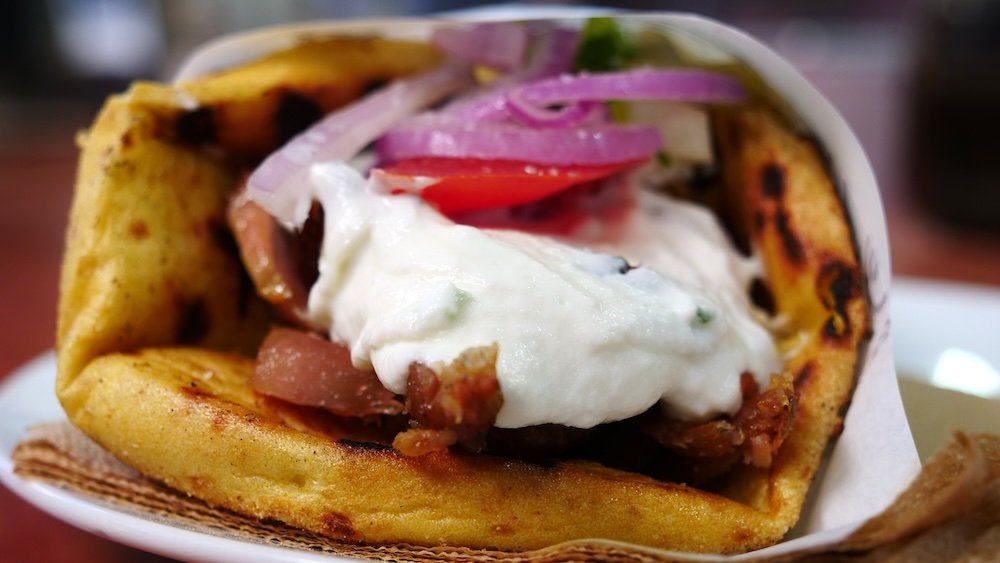
Sauces and Accompaniments: Gyro + Kebab + Donair
The distinct flavors of gyro, kebab, and donair are further elevated by the accompanying sauces and condiments that add depth and enhance the overall taste experience.
Signature Sauces and Condiments Associated with Each Dish
Gyro is famously accompanied by tzatziki sauce, a refreshing and creamy condiment made from yogurt, cucumber, garlic, lemon juice, and dill. This cool and tangy sauce perfectly complements the flavorful meat, adding a delightful contrast and a burst of freshness to each bite.
Kebab, depending on its cultural origin, may be accompanied by a variety of sauces and condiments. For Middle Eastern kebabs, a common accompaniment is tahini sauce, made from ground sesame seeds, lemon juice, garlic, and olive oil. Its rich and nutty flavor pairs beautifully with the aromatic spices of the kebab. South Asian kebabs often come with mint chutney, a zesty and herby sauce made from fresh mint leaves, cilantro, green chilies, yogurt, and spices. This vibrant condiment provides a cooling element to balance the heat and spices of the kebab.
When it comes to donair, the signature sauce is essential to its unique flavor profile. The Halifax-style donair features a sweet garlic sauce made from evaporated milk, sugar, garlic powder, and vinegar. This creamy and slightly sweet sauce perfectly complements the spiced meat, creating a harmonious combination that sets the Halifax-style donair apart from other variations.
Traditional Side Dishes and Garnishes that Complement Gyro, Kebab, and Donair
To complete the gyro experience, traditional side dishes and garnishes are often served alongside. Sliced tomatoes, onions, and crisp lettuce add freshness and a delightful crunch to each bite. Some variations may include additional toppings such as crumbled feta cheese or pickled vegetables, providing additional layers of flavor.
Kebabs are often served with aromatic rice, such as saffron-infused basmati rice or pilaf, which acts as a flavorful accompaniment to the grilled meat. Additionally, a side of warm bread, such as naan, lavash, or pita, is commonly served to scoop up the kebab and its accompanying sauces.
Donair is typically garnished with diced onions and fresh tomatoes, adding a vibrant touch and a burst of freshness to the wrap. Some variations may include shredded lettuce or even pickles, providing additional texture and flavor.
These traditional side dishes and garnishes enhance the overall taste experience of gyro, kebab, and donair, adding texture, freshness, and complementary flavors to the dishes. They reflect the regional culinary customs and cultural preferences, offering a complete and satisfying meal.
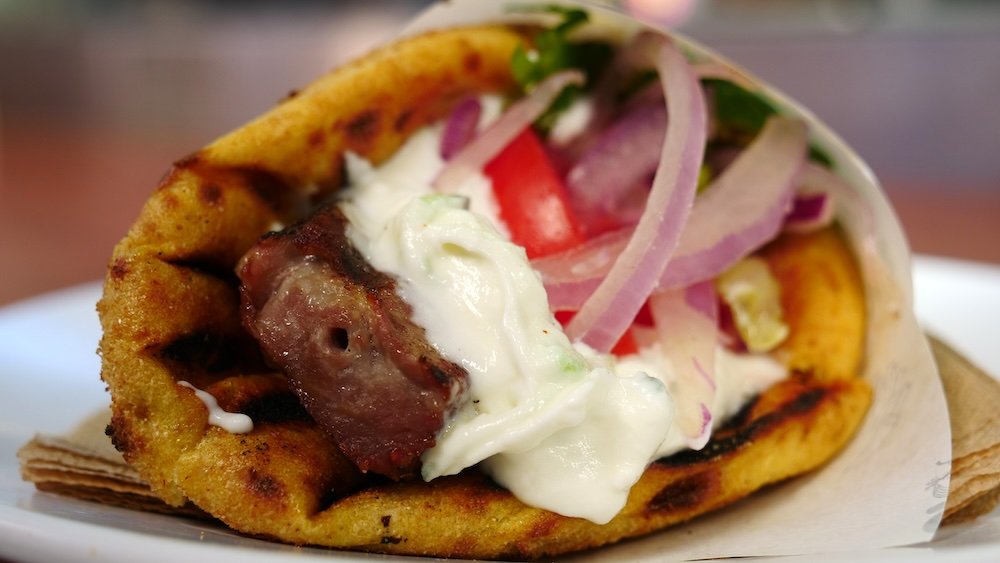
Popular Variations and Regional Specialties: Gyro + Kebab + Donair
Gyro, with its versatility, has inspired various delicious variations that cater to different tastes and preferences.
Gyro Variations, such as Souvlaki and Gyro Platters
One popular variation is souvlaki, which features skewered and grilled chunks of marinated meat, often served with pita bread and a side of tzatziki sauce. Souvlaki showcases the same flavorful meat found in gyro but presents it in a different format, allowing for a delightful handheld experience.
Another mouthwatering option is the gyro platter, a generous serving of gyro meat, typically sliced, and served on a bed of rice or fries, accompanied by a variety of condiments and garnishes. This variation provides a more substantial meal, perfect for those who crave a satisfying and complete gyro experience.
Diverse Kebab Styles like Shish Kebab, Seekh Kebab, and Kofta Kebab
Kebab, known for its versatility, encompasses a wide range of styles that vary across cultures and regions. Shish kebab, a popular style in the Middle East and Mediterranean, involves skewering pieces of marinated meat, often lamb or beef, along with vegetables such as bell peppers and onions. These kebabs are then grilled to perfection, imparting a tantalizing smoky flavor to the meat and vegetables.
Seekh kebab, commonly found in South Asian cuisine, features minced meat, typically lamb or beef, mixed with aromatic spices, onions, and herbs. The mixture is molded onto skewers and grilled over high heat, resulting in succulent and well-spiced kebabs that are bursting with flavors.
Kofta kebab, popular in Middle Eastern and South Asian cuisines, is made from ground meat, usually lamb or beef, mixed with spices, herbs, and sometimes breadcrumbs or rice. The mixture is shaped into elongated cylinders or balls and grilled until perfectly cooked. Kofta kebabs offer a juicy and flavorful experience, often served with bread, rice, or in wraps.
Notable Regional Donair Variations, Including the Halifax-style Donair
While donair originated in the Canadian Maritimes, there are notable regional variations that have emerged, each with its own distinct characteristics. One of the most famous variations is the Halifax-style donair, which features a sweet garlic sauce made from evaporated milk, sugar, garlic powder, and vinegar. This unique sauce, combined with the spiced and slow-roasted meat, creates a harmonious blend of flavors that has become an iconic local favorite.
In other regions, such as Alberta, you may find adaptations of the donair that include additional ingredients or different sauce variations. These regional adaptations demonstrate the versatility and adaptability of the donair, as it evolves and incorporates local tastes and preferences while maintaining the essence of this beloved dish.
These popular variations and regional specialties highlight the culinary creativity and diverse flavors associated with gyro, kebab, and donair. They offer unique experiences and showcase the ability of these dishes to adapt and flourish in different cultural contexts. Whether you’re enjoying a classic gyro platter, savoring flavorful shish kebabs, or indulging in the iconic Halifax-style donair, these variations provide a delightful journey through the world of these culinary delights.
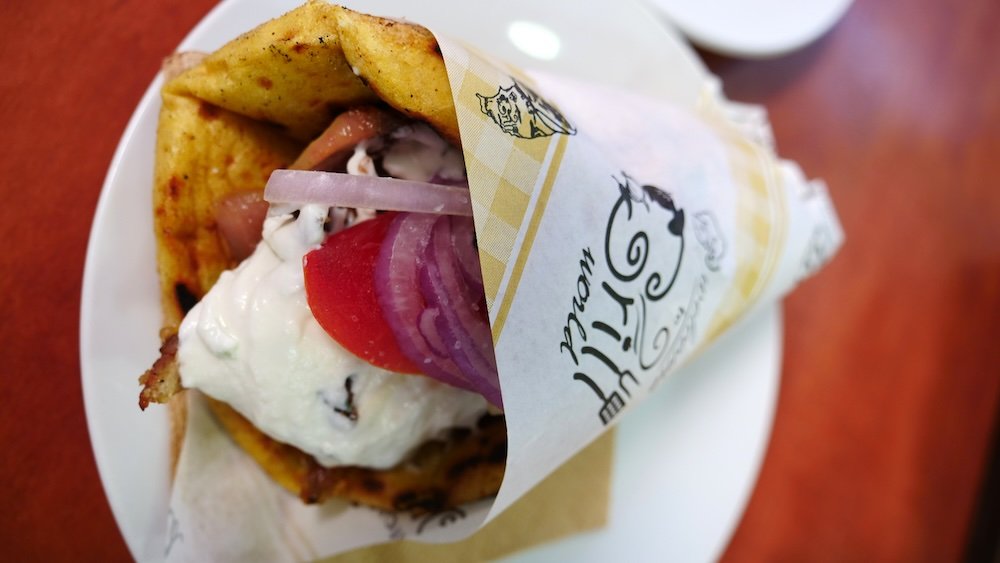
Cultural Significance and Global Influence
Gyro, kebab, and donair not only tantalize our taste buds but also hold deep cultural importance and symbolism in the regions from which they originate.
Cultural Importance and Symbolism of Gyro, Kebab, and Donair
Gyro, deeply rooted in Greek culinary traditions, represents a sense of community, celebration, and togetherness. In Greece, gyro is not just a food but an emblem of Greek culture, evoking images of vibrant festivals, bustling street corners, and joyful gatherings. It symbolizes the rich heritage and history of Greece, reflecting the spirit of hospitality and the love for shared meals with loved ones.
Kebab, with its diverse variations and cultural significance, is a culinary ambassador in the Middle East, South Asia, and beyond. It represents the art of grilling and the mastery of spices, showcasing the culinary traditions that have been passed down through generations. Kebab is often associated with family gatherings, special occasions, and festive feasts, embodying the spirit of hospitality and generosity.
Donair, with its origins in the Canadian Maritimes, holds a unique cultural significance in the local communities. It represents the blending of Greek and Canadian influences, showcasing the multicultural tapestry of Canada. The Halifax-style donair, in particular, has become an iconic symbol of the region’s culinary identity, reflecting the creativity and adaptability of cultural traditions.
How These Dishes Have Spread and Adapted in Various Parts of the World
Gyro, kebab, and donair have traversed borders and captivated the palates of people around the world, undergoing adaptations and adaptations in different culinary landscapes.
The global influence of gyro can be seen in the numerous Greek and Mediterranean restaurants that have proliferated across continents. The popularity of gyro has led to its incorporation into diverse cuisines, with variations and adaptations tailored to local tastes. From gyro-inspired sandwiches to fusion creations, gyro’s flavors and concept have been embraced by food enthusiasts worldwide.
Kebab, with its versatility, has also experienced global influence. Middle Eastern and South Asian kebab restaurants have become ubiquitous in many countries, offering a range of kebab styles and flavors. Kebab has inspired fusion dishes, such as kebab pizzas, kebab wraps, and innovative interpretations in international cuisines, showcasing the adaptability and appeal of this beloved dish.
Donair, originating in Canada, has made its mark beyond the Maritimes. It has gained recognition and popularity across the country, with donair shops and variations popping up in various regions. In some cases, the Halifax-style donair has even made its way to other countries, spreading the unique flavors and cultural fusion associated with this particular variation.
The spread and adaptation of these dishes highlight the power of culinary cross-pollination and the embrace of diverse flavors and traditions. They demonstrate how these culinary delights have transcended their original cultural boundaries, becoming part of the global food landscape and fostering a sense of appreciation and celebration of cultural diversity.
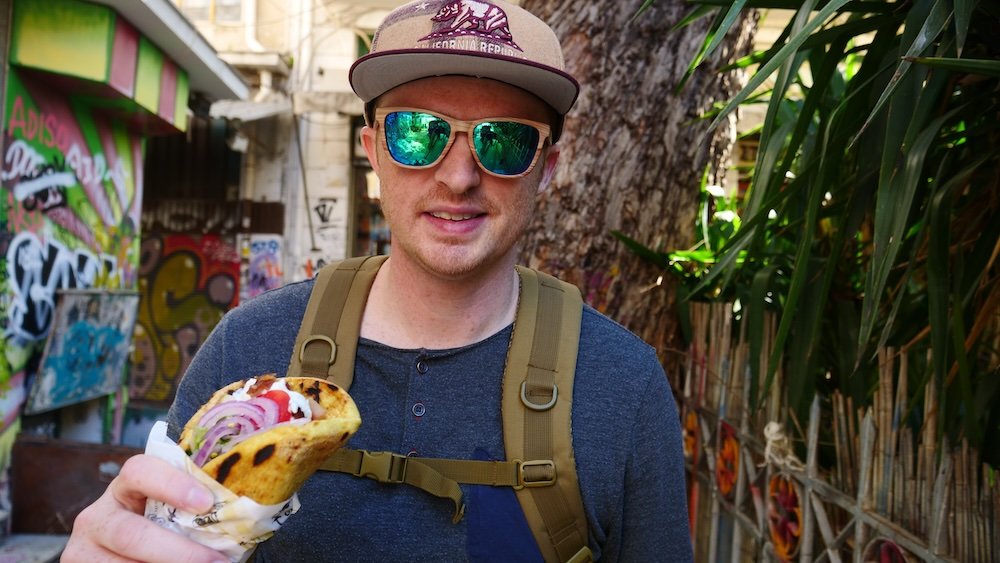
Planning A Gyro, Kebab And Donair-Themed Food Trip
If you’re anything like me, the easiest way to remember a place isn’t a museum or a monument. It’s the handheld food you ate on a curb while sauce dripped down your wrist.
Gyro in a noisy Athens side street, kebab eaten standing at a high table in a smoky grill house, donair inhaled under questionable fluorescent lighting at 2:00 a.m. in Halifax – those bites stick with you. You can absolutely build parts of your travels around these three wraps and, in the process, get a much deeper feel for the cities that love them most.
Think of gyro, kebab, and donair as three different “maps” you can follow through a destination. Same idea – meat, bread, sauce – completely different cultures, habits, and rhythms behind each one.
Where Each Dish Shines: Best Cities To Taste Them
Gyro: Greece’s Tastiest Compass
If you want to understand gyro properly, Greece is your classroom.
Classic Gyro Cities
- Athens – A giant open-air food court.
- Gyro shops tucked into side streets around Syntagma, Monastiraki, and Exarchia.
- Great for quick, cheap lunches between archaeological sites.
- Thessaloniki – Huge student population, late-night culture, and slightly different takes on spices and toppings.
- More ketchup/mustard experiments, and portions can be comically large.
- Greek islands – The quality can swing wildly, but when you find a spot that grills meat properly and doesn’t skimp on tzatziki, you’re golden.
- Ideal for a beach day lunch or post-swim dinner.
In Greece, gyro isn’t a “special outing” – it’s an everyday comfort food, which means you can use it to observe normal local life while you eat.
Kebab: Between The Grill And The Street
Kebab is a bigger world. You’ll bump into it across the Middle East, the Balkans, South Asia, and countless diaspora communities.
Cities That Really Live Their Kebab Culture
- Istanbul – A kebab universe in one city.
- Sit-down kebab houses where the grill is the star of the room.
- Tiny hole-in-the-wall spots where you eat standing at a ledge and wipe your hands on lemon-scented tissues.
- Gaziantep / Şanlıurfa (southeastern Turkey) – Next level for serious food travelers; intense flavors, heavier on spice and smoke.
- Berlin – A modern kebab capital thanks to Turkish immigration.
- Doner-style wraps, trays piled with shaved meat and salad, and plenty of late-night options. You’ll taste how kebab has evolved far from its original home.
Kebab is one of the easiest ways to plug into everyday urban life – lunch crowds, post-work meetups, late-night post-bar hunger. Follow the grill smoke and you’re rarely wrong.
Donair: Canada’s Late-Night Legend
Donair is home turf for Canadians, especially in the east.
Where Donair Tells A Story
- Halifax, Nova Scotia – Ground zero.
- Donair shops that feel like institutions, complete with faded photos, sticky floors, and the sweet smell of that signature sauce.
- You’ll see everyone from students to taxi drivers lining up at ridiculous hours.
- Smaller Maritime towns and cities – Truro, Dartmouth, Moncton, etc.
- Fewer tourists, more regulars. A good place to see how donair has become “just what you eat” after a hockey game or night out.
- Alberta (Calgary, Edmonton) – Where the donair migrated and mutated.
- Heavier, bigger, often with more topping choices, and sometimes a bit of fusion creeping in.
Donair gives you a window into Canadian immigrant stories, regional pride, and nightlife in one messy, glorious wrap.
Budgeting Your Wrap Obsession
These foods are generally budget-friendly, but prices still vary by country and setting. Here’s a rough snapshot to help you plan:
Quick Cost Comparison (Rough, Per Person)
| Place / Style | Street Counter Wrap | Sit-Down Plate (Meat + Sides) | Late-Night “Big One” |
|---|---|---|---|
| Athens – gyro | Very cheap | Low–moderate | Cheap–moderate |
| Thessaloniki / Greek islands | Cheap–moderate | Moderate | Moderate |
| Istanbul / Turkish cities – kebab | Cheap–moderate | Moderate | Cheap–moderate |
| Berlin – doner/kebab | Cheap | Moderate (bigger plates) | Cheap–moderate |
| Halifax – donair | Moderate | Moderate | Moderate–high (xl) |
| Alberta – donair | Moderate | Moderate–high | Moderate–high |
A realistic “wrap day” budget if you’re really leaning in:
- Two wraps + a drink + transport will usually stay in the realm of:
- Modest budget day in Greece or Turkey.
- Still reasonable in Canada/Europe compared to restaurant meals.
You can always upgrade to a “plate” with salad, rice, and drinks if you want one bigger sit-down meal instead of multiple snack-sized wraps.
How To Order Like A Local
Gyro Etiquette In Greece
Ordering gyro in Greece is straightforward, but a few adjustments make you look less like you just stepped off the tour bus.
- Know your format
- Wrap (pita) vs plate (served with fries, salad, bread).
- Expect fries inside
- In a lot of places, fries go into the wrap. Don’t be surprised when you bite in.
- Default meat
- Pork is often the default, but chicken is common too. If you prefer one, say so clearly.
- Sauce and toppings
- “Everything” usually means tzatziki, tomato, onion, and fries.
- If you hate raw onions, say so when you order. Once it’s wrapped, there’s no going back.
Pro tip: avoid the places plastered with huge, laminated English menus and photos right beside the most famous landmarks. Walk one or two streets back and look for short menus, lots of locals, and a constant stream of takeaway orders.
Kebab Ordering Tips
Kebab menus can feel overwhelming if you’re not familiar with the terminology.
- Plate vs wrap
- Plates are better if you’re hungry and want rice, salad, and bread.
- Wraps are better for wandering and people-watching.
- Doner vs shish vs kofta/seekh
- Doner: shaved from the vertical spit.
- Shish: cubes of meat on skewers.
- Kofta/seekh: minced meat shaped around a skewer.
- Ask about spice level
- South Asian-inspired kebabs can be fiery. If you’re not sure, ask for “mild” the first time.
- Watch what locals order
- If everyone is getting the same thing, they know something you don’t. Copy them.
In busy places, don’t overthink it. Point to what looks good on the grill or order the house specialty if they have one.
Donair Like You Mean It
In Canada, donair culture is casual, slightly chaotic, and very forgiving – but there are still a few unspoken rules.
- Size matters
- “Regular” is often already generous. “Large” can be a food challenge. “Super” or “jumbo” is sometimes two meals.
- Sauce is not optional
- The sweet garlic sauce is the whole point, especially in Halifax. You can ask for “extra sauce,” but accept that things will get messy.
- Toppings
- Classic: donair meat + sweet sauce + tomato + onion.
- Elsewhere in Canada you may see lettuce, cheese, or other extras – traditionalists might scoff, but it’s your wrap.
- Late-night reality
- Expect lines, noise, and a floor that’s seen things.
- Have your order ready before you reach the front. This isn’t the time to be indecisive.
Sample Food-Focused Days Built Around Each Dish
You don’t have to spend your entire trip eating wrapped meat (unless you want to), but weaving one featured dish into an otherwise normal sightseeing day works beautifully.
A Gyro-Filled Day In Athens
Morning
- Start with a strong coffee and something light (spanakopita or a simple pastry).
- Sightseeing around the Acropolis, Plaka, or the Ancient Agora.
Lunch
- Grab a gyro pita from a busy shop near (but not directly beside) a big square.
- Look for spots where you see office workers and delivery drivers – that’s usually where the value and taste align.
Afternoon
- Walk it off through neighbourhoods like Psyrri or Exarchia.
- Stop for a cold drink and a Greek coffee somewhere in the shade.
Evening
- Consider a second gyro or a gyro platter version with a salad and fries at a slightly more sit-down style place.
- End with a stroll along a lively pedestrian street, watching locals meet up for drinks while you digest.
A Kebab Crawl In A Big City (Istanbul Or Berlin Style)
Late Morning
- Light breakfast: you’re going to be grazing all day.
- Start in a central area and wander through markets or along the waterfront.
First Kebab Stop (Lunch)
- Go for a classic: doner in a wrap or on a plate.
- Sit where you can see the grill or the street life, not just a TV.
Between Meals
- Walk a couple of kilometres through residential streets, grabbing tea or coffee.
- Check out a park, small mosque or church, or a local market that’s not in every guidebook.
Second Kebab Stop (Afternoon)
- Try a different style: shish or kofta, maybe somewhere slightly more old-school and family-run.
- Share one plate if you’re getting full, just to taste the difference.
Night
- If the city has a nightlife area, swing through once bars start filling.
- Optional final kebab or smaller snack at a late-night place full of locals.
The goal isn’t to set a personal record. It’s to taste how the same basic idea changes across neighbourhoods and settings.
A Donair And Waterfront Evening In Halifax
Afternoon
- Explore the waterfront boardwalk, visit a museum, or just sit and watch the harbour.
- Have a light mid-day meal that’s not donair, so you still have room.
Evening
- Go for a normal dinner time snack or “first donair” at a shop known more for locals than Instagram.
- Take it outside if the weather is good; wraps taste better in the fresh air.
Late Night
- If you’re out for drinks, you’re basically obligated to end the night with a second, more chaotic donair.
- Watch the late-night crowd dynamics: friends arguing over sauces, people comparing whose wrap is bigger, taxi drivers double-parked outside.
This is where the donair stops being food and becomes a ritual.
When These Dishes Taste Best
There’s a reason so many of these spots do their best business late at night.
- Gyro hits perfectly after a long day of walking in the heat. Salt, fat, carbs, and cold tzatziki all in one bite.
- Kebab peaks at two very different moments:
- Lunch, when you’re starving and need something satisfying.
- After dark, when grill smoke fills a side street and tables overflow onto the sidewalk.
- Donair is almost designed for post-bar culture. You, your friends, a pile of napkins, and a wrap that barely holds itself together.
You can absolutely eat all of them at respectable daytime hours. But some foods really do come alive under neon lights.
Vegetarian, Vegan And Lighter Options
If you don’t eat meat (or you simply need a break), you’re not excluded from the wrapped fun.
Gyro Without The Meat
- Many Greek places offer halloumi or grilled veggie gyros, with zucchini, peppers, and mushrooms.
- A “gyro plate” minus meat still gets you salad, fries, bread, and tzatziki; add grilled cheese or veggies and you’re good.
Kebab Alternatives
- Falafel wraps are almost universal in kebab shops outside their original regions.
- Grilled vegetable skewers with bread and salad can be just as satisfying as meat.
- In some modern spots you’ll even find seitan or soy-based kebab-style fillings.
Donair-Inspired Without The Beef
- In Canada, some places offer chicken or veggie donairs, or even donair pizza as a shareable option.
- Worst case, grab a classic slice from somewhere nearby and just steal a bite of someone’s donair to taste the sauce.
You can still join the food rituals even if you tweak the fillings to suit your diet.
Common Mistakes To Avoid On A Wrap-Focused Trip
A few small adjustments will make your gyro/kebab/donair days much more enjoyable.
Overdoing It Too Early
- Going for the biggest size at your very first stop is tempting but risky.
- Start with regular portions so you can try multiple places rather than tapping out early and regretting it.
Only Eating In Tourist Zones
- The most beautifully branded spots near major attractions aren’t always where locals go.
- Walk a few blocks into more residential streets and suddenly prices drop and quality shoots up.
Ignoring The Line
- A short line that moves quickly is usually a good sign – it means turnover is high and the meat isn’t sitting around.
- A place that’s completely empty at prime time should at least make you curious why.
Not Respecting Local Eating Rhythm
- In some places, locals eat lunch later than you might be used to. Arriving exactly at local lunchtime means you may fight for a table.
- Alternatively, arriving slightly before or after the rush can get you fresher food and a more relaxed conversation at the counter.
Forgetting About Cash (In Certain Spots)
- Big-city, modern shops usually take cards, but smaller, older places sometimes still prefer cash.
- Having a bit of local currency on hand can save you from awkward “I already ordered and now my card won’t work” moments.
Gyro, Kebab & Donair Questions Answered: Tasty Comparisons, Travel Tips & Real-World Advice
What’s the main difference between gyro, kebab, and donair in simple terms?
Simply put, gyro is Greek, kebab is broader Middle Eastern/South Asian, and donair is Canadian Maritime comfort food. Gyro usually means thinly sliced pork or chicken shaved off a vertical spit, wrapped in pita with tzatziki and fries. Kebab is a whole family of dishes: skewered cubes (shish), minced meat on skewers (kofta/seekh), or doner-style shaved meat served on plates or in wraps. Donair is the Halifax-born cousin: spiced ground beef on a vertical spit, stuffed into pita with a sweet garlic sauce, tomatoes, and onions. Same basic concept—meat, bread, sauce—but totally different flavor profiles and cultural stories behind each one.
If I’ve never tried any of them before, which one should I start with?
Honestly, start with whatever is easiest to find where you are. If you’re in Greece, gyro is the obvious first step: it’s familiar enough (sandwich vibes) but still feels very local. In a city with a big Turkish or Middle Eastern community, go kebab first so you can explore different cuts of meat and spice blends. If you’re in Halifax or elsewhere in the Maritimes, make it a donair night and lean into the messy, late-night ritual. Over time, try all three—you’ll quickly figure out whether you’re more of a tangy-tzatziki person, a smoky-kebab person, or a sweet-garlic-sauce person.
Are gyro, kebab, and donair just street food, or can they be proper sit-down meals?
Both. In a lot of places, gyro, kebab, and donair live in two worlds: fast, stand-up street food and more composed restaurant plates. A gyro in pita is perfect as a quick bite between sightseeing stops, but a gyro platter with salad, fries, and bread feels like a full meal. Kebab can be a simple wrap eaten on the sidewalk, or it can show up as a big mixed grill with rice and sides in a proper restaurant. Donair is famous as a late-night takeaway, but some spots do big plates, donair pizzas, or family-style spreads. Think of them as flexible: snack if you want, feast if you’re hungry.
How spicy are gyro, kebab, and donair, and which one is best if I’m sensitive to heat?
Mild. Most classic gyros are more about herbs (oregano, garlic, paprika) than chili heat, so they’re usually the safest bet for spice-sensitive travelers. Kebab is the wild card: Turkish and Levantine kebabs lean aromatic with only gentle warmth, while some South Asian kebabs can be properly fiery. Donair, especially Halifax-style, isn’t spicy at all—the flavor punch comes from garlic and sweetness. If you’re nervous, just ask for “not spicy” or “mild” when ordering kebab, and you’ll usually be fine.
Where are the best places in the world to try an “authentic” gyro, kebab, and donair?
Absolutely. If you can, chase each dish back to its home turf. For gyro, Greece is the classroom—Athens and Thessaloniki are perfect cities to taste different versions just by walking a few blocks. For kebab, Istanbul is an amazing all-rounder, while cities in southeastern Turkey and across the Middle East take you deeper into regional styles. South Asian cities like Lahore or Delhi are fantastic if you’re curious about seekh and boti kebabs. For donair, Halifax and other Maritime cities are the places where the late-night culture and sweet sauce really make sense. Elsewhere in the world, look for neighborhoods with big Greek, Turkish, or Middle Eastern communities for surprisingly good versions.
Are these wraps budget-friendly for travelers, and roughly how much should I expect to pay?
Usually yes. Gyro and kebab are often some of the best-value meals you can find. In Greece and Turkey, a street-style wrap often lands in the cheap to cheap–moderate range compared to sit-down restaurant dishes. In big European or Canadian cities, prices creep up, but they’re still good value for how filling they are. As a rough mental rule: one wrap is often enough for a light meal, two wraps or a full plate will carry you through a busy day of sightseeing. If you’re traveling on a budget, mixing one bigger wrap meal with supermarket snacks is an easy way to save money without feeling deprived.
Can vegetarians or vegans still enjoy gyro, kebab, and donair-style food?
Yes. You’re not locked out of the fun just because you skip meat. For gyro, you’ll often spot halloumi, grilled veggie gyros, or plates heavy on fries, salad, and pita. Kebab shops almost always have falafel wraps, grilled vegetable skewers, and increasingly plant-based “doner” alternatives made from seitan or soy. Donair is the trickiest, but in Canada more modern spots are experimenting with chicken donairs, veggie fillings, or donair pizza you can share and customize. If you’re vegan, you may need to skip creamy sauces or ask for tahini instead of yogurt-based options, but the basic bread + salad + sauce combo can still hit the spot.
How heavy or unhealthy are gyro, kebab, and donair, and are there ways to make them lighter?
It depends. All three can be total calorie bombs if you go for jumbo sizes loaded with meat, fries, cheese, and rich sauces. But you can dial things down. Choose chicken instead of fatty beef or pork if that’s offered, ask for extra salad, skip or reduce the fries, and go for a normal-sized wrap instead of the “super” option. Plates with rice, salad, and grilled meat can be surprisingly balanced, especially if you’re walking a ton while traveling. Donair is probably the least “light” choice thanks to the sweet garlic sauce and fattier meat, so treat that one as an occasional indulgence rather than a daily routine.
What’s the best time of day to eat gyro, kebab, and donair while traveling?
Night. These dishes taste good any time, but they come into their own later in the day. Gyro is perfect for a late lunch or early dinner after hours of sightseeing in the sun. Kebab feels right both at lunchtime (when locals flood in from offices) and late at night when grills are smoking and tables spill onto the pavement. Donair really leans into late-night culture—after drinks, after a concert, or just when the city feels a bit chaotic and loud. That said, don’t be shy about eating any of them at “normal” hours if that works better with your schedule and sleep.
Any etiquette tips so I don’t look clueless when ordering these dishes abroad?
Absolutely. In most places, no one expects you to be an expert, but a few small moves help. Know whether you want a wrap or a plate before you reach the counter. Be ready to answer questions like “Which meat?” and “Everything on it?” without freezing. If you hate raw onions or certain toppings, say so clearly when you order rather than picking them out later. In busy spots, have your money or card ready so you’re not blocking the line. And if locals are clearly queuing in a certain way—inside, outside, take-a-number system—just copy the rhythm and you’ll blend right in.
Are gyro, kebab, and donair safe to eat from street stalls, or should I only choose restaurants?
Mostly safe if you’re picky in a good way. Look for places with a steady line and high turnover—that usually means the meat isn’t sitting around forever. The spit should be actively rotating and the outer meat getting crisped, not grey and sad. Staff should be handling food with some basic hygiene: separate tongs for raw and cooked meat, reasonably clean counters, and ingredients that look fresh rather than dried out. If something smells off, the place is empty at peak hours, or ingredients look tired, move on. Your nose and your gut (figuratively) are good judges here.
Are these dishes kid-friendly, or will the flavors be too strong for younger travelers?
Often kid-friendly. Most kids who like burgers, pizza, or simple sandwiches can handle a ton of gyro and kebab if you keep things basic. You can ask for mild seasoning, skip spicy sauces, and stick to meat, bread, and a bit of cheese or fries. Donair’s sweet sauce actually makes it easier for some kids to enjoy, though it can be messy. The key is portion size and toppings—start small, avoid too much raw onion or chili, and let them try a bite of yours before committing to a full wrap.
What should I pack or wear if I’m planning a wrap-focused food day on my trip?
Practical. Wear something you don’t mind getting a few drips on, because sauces and gravity are a dangerous combo. Dark shirts and shorts or trousers handle stains better than light-colored outfits. Bring a small pack of napkins or tissues and maybe a travel-sized hand sanitizer for sticky fingers after street food. If you know you’re going to be walking a lot between spots, comfortable shoes matter more than anything—you’ll enjoy your kebab way more if your feet aren’t killing you.
If I only have one day in Athens, Istanbul, or Halifax, how many gyro/kebab/donair places should I realistically try?
Two to three. It’s tempting to turn the day into a “how many wraps can I eat” challenge, but you’ll enjoy the experience more if you pace yourself. For example, one gyro at lunch and one gyro or platter at dinner in Athens is plenty. In Istanbul or Berlin, one kebab for lunch and a different style in the evening shows you how varied it can be. In Halifax, a “sensible” donair in the early evening and a slightly more chaotic late-night donair is a fun way to read the city’s nightlife. Leave time to actually walk neighborhoods, sit on benches, and people-watch between bites.
How can I tell if a place is more of a local favorite versus a tourist trap?
Watch the crowd. Tourist traps tend to sit on the main squares with glossy menus in multiple languages and huge food photos. Local favorites are often one or two streets back, with smaller signs and short menus. If you see delivery drivers, office workers, or taxi drivers constantly coming and going, that’s a great sign. Prices that are slightly lower than the most famous landmark-adjacent spots are another clue. When in doubt, follow the line that looks like everyday people rather than a group of visitors all holding the same guidebook.
Letting Wrapped Street Food Guide Your Travels
Using gyro, kebab, and donair as a loose framework turns your trip into something more than a checklist of famous buildings. You start noticing where office workers go on their lunch break, which corner shop suddenly explodes with business after dark, which neighbourhood feels comfortable for families and which one turns into a late-night snack zone.
You’ll still see the big sights. You’ll still walk past the monuments. But in the background, you’re quietly following the smell of grilled meat (or halloumi), fresh bread, and garlic sauce from one city to the next.
And years later, when you think back on Athens, Istanbul, Berlin, Halifax or anywhere else you’ve wrapped your hands around one of these, you probably won’t remember the name of every temple or museum.
You’ll remember that perfect, drippy, messy first bite.



